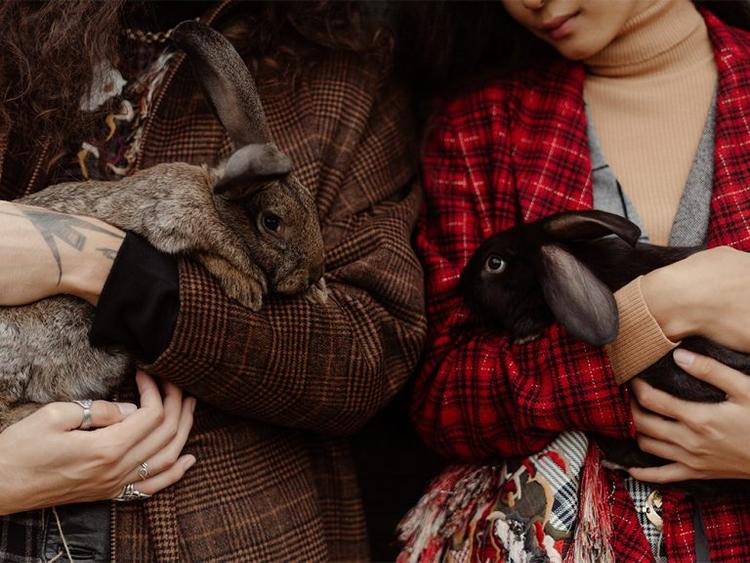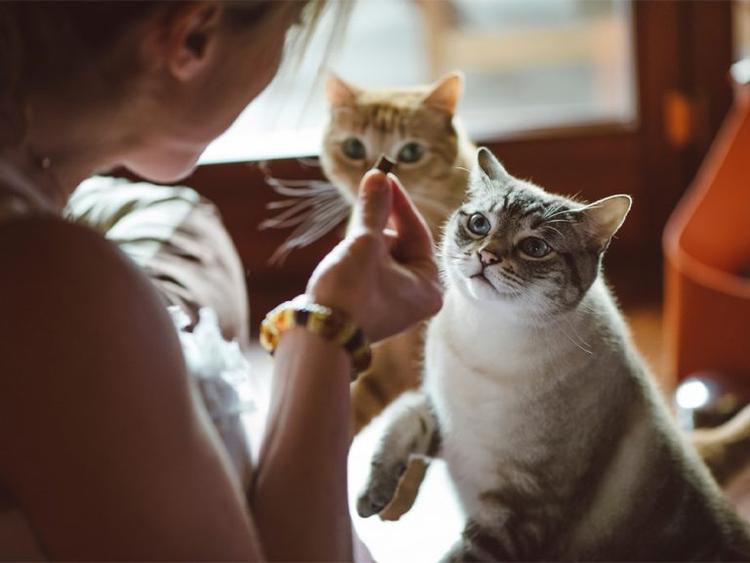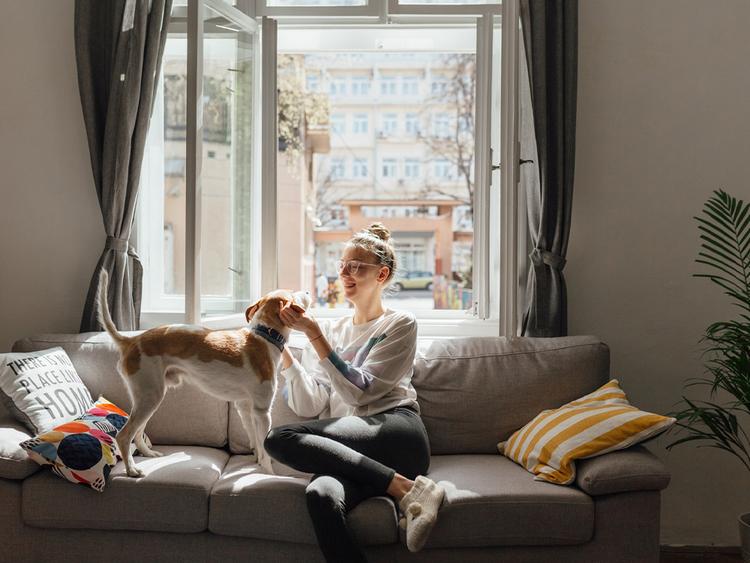How to Care for a Rabbit
They’re cute but not as low-maintenance as you’d think. Check out our comprehensive guide for everything you need to know to raise a rabbit.
They’re cute but not as low-maintenance as you’d think. Check out our comprehensive guide for everything you need to know to raise a rabbit.
by Adrienne A. Kruzer, BBA, RVT, LVT, | May 15, 2024

David Prado / Stocksy
With their playful personalities and adorable antics, rabbits make delightful pets. And while they may not seem needy, they do require a fair amount of attention. To be the best pet parent to your new rabbit, you’ll need to provide them with a spacious, safe environment, a well-balanced diet, and regular interaction for mental stimulation.
With proper care, your rabbit will thrive and become a beloved member of your family. If you’re still asking yourself, “What do rabbits need?” we’ve got you covered. Read on for all the specifics to consider while raising a rabbit.
Rabbits have individual personalities and offer amazing companionship. Also, they can live into their double digits. But for that to happen, you’ll need to provide them with a clean and safe space, grooming, proper nutrition, mental stimulation, and veterinary care. They should likewise have a rabbit friend — so if you want to get a bunny, plan on getting two.
The average bunny lifespan is expected to be between eight and 12 years. The record for the oldest rabbit who ever lived is 18 years.
There are several breeds of pet rabbits, some more common than others. Common breeds are typically less expensive than rarer rabbit breeds. So expect to pay anywhere between $20 and $100 for a rabbit.
Rabbits are herbivores, meaning they only eat plant matter. Alfalfa hay should make up about 80 percent of a young rabbit’s diet, with some dark, leafy greens and fortified rabbit pellets making up the remaining 20 percent. That split still holds true as your rabbit matures into an adult, only you should switch your rabbit from alfalfa hay to grass hay (such as orchard or timothy hay). A basic rule of thumb is half a cup of leafy greens and half a tablespoon of other veggies, per one pound of rabbit. There is also a variety of raw vegetables that can be fed daily, as part of that 20 percent split, to both young and mature rabbits, including:
Alfalfa sprouts
Arugula
Basil
Beet greens
Bell peppers
Bok choy
Boston bibb lettuce
Brussels sprouts
Butter lettuce
Carrot tops
Cilantro
Clover sprouts
Cucumbers
Dill
Endive
Escarole
Fennel
Green leaf lettuce
Mint
Okra leaves
Oregano
Parsley
Pea pods
Radicchio
Radish sprouts
Radish tops
Red leaf lettuce
Romaine lettuce
Rosemary
Sage
Thyme
Watercress
Wheatgrass
Zucchini
The following vegetables and fruits can be fed to adult and younger rabbits, but only on an occasional basis to avoid digestive issues:
Apple (with the seeds removed)
Banana
Blackberries
Blueberries
Broccoli (only the stems and leaves)
Calendula flowers
Carrots
Chamomile flowers
Chard
Clover
Cranberries
Cherries (with no pits)
Collard greens
Dandelion greens (pesticide-free)
Daylily flowers
Dianthus flowers
English daisy flowers
Grapes
Hibiscus flowers
Honeysuckle flowers
Kale
Marigold flowers
Melon
Nasturtium flowers
Nectarine
Orange
Pansy flowers
Papaya
Peach
Pear
Pineapple
Plum
Raspberries
Rose flowers
Spinach
Strawberries
Watermelon
Hay should be offered in a large pile or a hay hopper. Fresh vegetables and fruits can be placed on a heavy dish that’s cleaned each day to avoid fruit flies and mold. Additionally, provide fresh water in both a water bottle and a water dish. Rabbits will drink more water if you also provide a water dish, but choose one that cannot be easily tipped over.
Follow the 80/20 rule detailed in the “What to feed a rabbit” section, above. With that in mind, hay can be fed on an unlimited basis so that your rabbit can eat as much as they want, but you’ll need to limit rabbit pellets to about one-fourth to one-half a cup a day. You can also provide up to two cups of dark leafy green vegetables each day. If you choose to give the occasional (safe) fruit to your rabbit, limit this to only once or twice a week to avoid upsetting your rabbit’s digestive tract or raising their blood sugar too much.
Rabbits sadly have a high prevalence of reproductive-organ cancers. So spaying or neutering them, which reduces their cancer risk, is a good idea. Neutering males will likewise help decrease territorial behaviors such as aggression and urine-marking. And of course, if you have a male and female rabbit living together, getting them spayed and neutered will prevent unwanted pregnancies.
Spaying a female rabbit and neutering a male rabbit are both surgeries that must be completed while your rabbit is under full anesthesia. Because of this, there are anesthetic costs, in addition to the price of the procedure and post-op pain medication. Surgical costs vary by region and vet, but expect to pay at at least a few hundred dollars (and up to $1,000) for spaying or neutering.
It’s ideal to spay or neuter your rabbit when they’re between four and six months of age, but the procedures can be performed later in life as well. Regardless of age, there’s always a risk when anesthesia is involved, so discuss the pros and cons with your veterinarian.

Robin Deimel / AdobeStock
Rabbits are not the kind of pets who can just sit in a cage. They require space to run, play, and safely explore outside their cages — not to mention an enclosed area to eat and sleep.
If you choose to keep your rabbit indoors (which is recommended), you can purchase one from a pet or farm-supply store. Alternatively, you can make your own rabbit enclosure from scratch, or fashion one out of a dog crate, X-pen, or large storage container. In addition to a cage, your rabbit should have a rabbit-proofed room or area to run around when they’re not sleeping in their enclosure. If you don’t have air conditioning and your home’s temperature hits over 77 degrees, make sure your rabbit’s space has frozen water bottles, fans, and other things to help them stay cool.
Depending on where you live, your rabbit may be able to live outdoors year-round in a hutch that can be made or purchased. Just make sure your rabbit’s hutch is secure enough so predators like hawks and raccoons cannot get inside them. If you want to let your rabbit run around outside their hutch, use a harness and leash or X-pen to give them some extra space — but always supervise them. As with indoor rabbits in environments above 77 degrees, make sure your rabbit’s hutch has cooling options such as frozen water bottles and shade.
Choose a litter box with low edges, so your rabbit can easily see and access the area. Place it where your rabbit already prefers to use the bathroom. A corner of an enclosure or room is a popular spot for a litter box to be placed, but rabbits also often defecate while they eat, so you may want to position your rabbit’s hay feeder such that they have to sit in the litter box while they eat. Place absorbent, dust-free substrate in the litter box, and put some of your rabbit’s waste in the litter box if they eliminate outside of it during the training process. This will help attract and remind them of where they should go. You can reward your rabbit with healthy treats if you see them using the litter box, but don’t punish your rabbit if they don’t.
Choose a room or area where your rabbit can spend time each day, and rabbit-proof it by keeping dogs and cats away from the space and covering up any areas where your rabbit could get stuck (floor vents, spaces under doors, tables, shelves). Also make sure there aren’t any carpet, strings, or wires in this area that your rabbit could chew on, get tangled in, or pull up. If you can’t rabbit-proof an entire room, an X-pen can create a large space within a room for your rabbit to run around.
Rabbits are very active, social pets who need regular care. Taking them to the vet, regular playtime, socialization, and even grooming should be expected parts of caring for a pet rabbit.
It’s easier to socialize a young rabbit, so if your mature rabbit is not well-socialized, gaining their trust may take some time. Tasty treats should be reserved for socialization time, including when you’re learning how to handle your rabbit. Patience is key here. Move slowly and allow your rabbit to come to you — and avoid grabbing or startling them. Sitting on the ground in your rabbit’s play area encourages them to hop up to you. Let them come to you — don’t chase them. You can also hand-feed your rabbit their regular hay and vegetables each day if they aren’t used to being around people at all. This will help them learn to trust you.
Depending on the breed, your rabbit may require regular grooming, including brushing, haircuts, nail trims, baths, and ear cleanings. If your rabbit has fur that regularly tangles, has mats, or gets feces stuck in it, this may require regular brushing or haircuts. Most rabbits will need nail trims unless they spend enough time on surfaces that naturally wear down their nails. Your rabbit may also require ear cleanings, especially if they have an ear infection, mites, or floppy ears. They usually only need baths if they get dirty. Special care should be taken not to stress, chill, or overheat them while bathing them.
Watch for any changes in your rabbit’s normal activity to indicate when it’s time for a vet visit. Otherwise, rabbits should receive annual vet visits to check for any changes in their health and address concerns before they become problems.
Your veterinarian will:
Listen to your rabbit’s heart, lungs, and gut sounds
Look in their eyes, ears, and mouth
Feel their body for any lumps or other abnormalities
Watch them move around the room
Discuss their behavior, environment, and diet
Provide your rabbit with ample space to exercise each day, as well as toys, food puzzles, and other forms of enrichment. Toys that your rabbit can pick up, roll, or throw are popular options, in addition to toys that they can chew. Keeping your rabbit’s body and mind busy is important for their well-being. You can provide mental stimulation by stuffing hay and vegetables into empty toilet-paper tubes, tissue boxes, and store-bought food puzzles.
Basic Rabbit Care Handout and Infographic
How to Keep Rabbits Cool in Summer
Practitioner’s Guide to Pocket Pet and Rabbit Theriogenology

Adrienne Kruzer is an accomplished veterinary technician and writer with over 15 years of hands-on experience caring for domestic and exotic animals.

Adoption Advice

Adoption Advice

Shelters & Rescue

Adoption Advice

Adoption Advice

Adoption Advice
Dealing with high vet bills? See assistance options for affordable pet care. Get the support your pet needs without breaking the bank.

Adoption Advice
Wondering about tax savings for pet expenses? Learn about Pet Tax Deductions to understand how to claim your pet on taxes

Shelters & Rescue

Adoption Advice
These giant guinea pigs are smart and social, so what could go wrong? Read on to better understand why these animals don’t make good pets, and why they’re outlawed in several places.